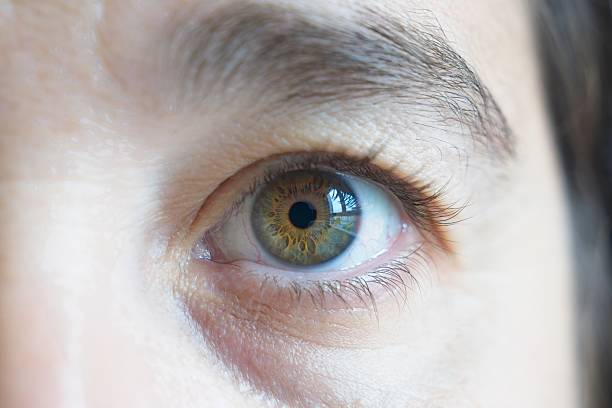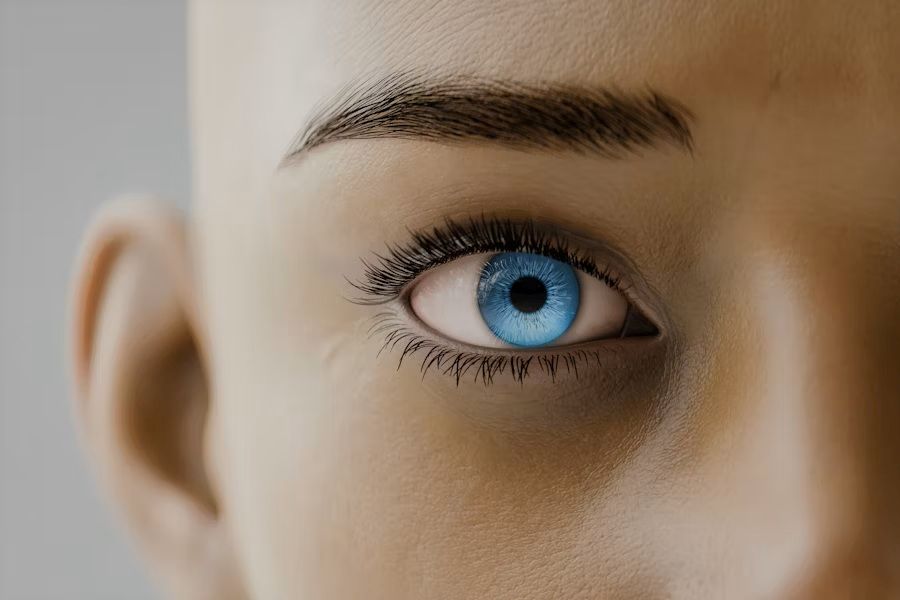Your Cart is Empty
Male vs Female Eyes: Are They Really Different? Science Reveals

When we gaze into someone's eyes, we might notice their color, shape, or the emotions they convey. But have you ever wondered if there are fundamental differences between male and female eyes? While at first glance, eyes may seem universally similar, science has uncovered some intriguing distinctions that go beyond mere aesthetics. Let's delve into the fascinating world of ocular dimorphism and explore how male and female eyes differ in structure, function, and health.
Anatomical Differences
1. Size and Shape
One of the most noticeable differences between male and female eyes lies in their size and shape. On average, male eyes tend to be slightly larger than female eyes. This difference is not just in the eyeball itself but also in the orbital cavity – the socket that houses the eye.
Dr. Emma Richardson, a leading ophthalmologist, explains, "The male orbital rim is typically more pronounced and angular, while the female orbital rim tends to be rounder and less defined. This contributes to the overall appearance of the eyes and can influence facial aesthetics."
2. Eyelids and Lashes
Female eyes often appear larger due to differences in eyelid structure. Women generally have a higher arch in their eyebrows and more space between the eyelid and the brow. This creates the illusion of larger eyes, even if the actual eyeball size is smaller.
Eyelashes also show sexual dimorphism. Female eyelashes are usually longer and have a more pronounced curl compared to male eyelashes. This difference is thought to be influenced by hormones, particularly androgens.
3. Tear Production and Composition
Interestingly, the lacrimal gland, responsible for tear production, shows some gender-based variations. Women tend to have smaller lacrimal glands but paradoxically produce more tears than men. This difference becomes particularly noticeable during emotional responses.
Dr. Michael Lee, a biochemist specializing in tear composition, notes, "We've observed slight variations in tear film composition between males and females. These differences can affect tear film stability and may contribute to the higher prevalence of dry eye syndrome in women."
Functional Differences
1. Color Perception
One of the most striking functional differences between male and female eyes lies in color perception. Research has shown that women are better at distinguishing between different shades of colors, particularly in the red-orange-yellow spectrum.
This enhanced color discrimination in females is thought to be linked to the X chromosome. Since women have two X chromosomes compared to men's single X chromosome, they are more likely to have a broader range of cone pigments, the photoreceptors responsible for color vision.
Dr. Sarah Thompson, a neuroscientist studying visual perception, explains, "This superior color discrimination in females might have evolutionary roots. In hunter-gatherer societies, women were often responsible for gathering fruits and plants, where the ability to distinguish subtle color variations could be advantageous."
2. Peripheral Vision
While women excel in color perception, men seem to have an edge when it comes to peripheral vision and motion detection. Studies have shown that men generally have a wider field of view and are quicker at detecting movement in their peripheral vision.
This difference is thought to be related to the hunter role in early human societies, where spotting prey or potential threats from a distance was crucial for survival.
3. Night Vision
Some research suggests that men might have slightly better night vision than women. This could be due to the larger pupil size in male eyes, allowing more light to enter the eye in low-light conditions.
However, Dr. Richardson cautions, "While there's some evidence for better male night vision, the differences are generally small and can vary significantly between individuals."
Health and Disease Differences
1. Dry Eye Syndrome
One of the most significant health-related differences between male and female eyes is the prevalence of dry eye syndrome. Women are nearly twice as likely as men to develop this condition, especially after menopause.
The higher incidence in women is attributed to hormonal factors, particularly the influence of estrogen on tear production and quality. Additionally, autoimmune diseases that can cause dry eye, such as Sjögren's syndrome, are more common in women.
2. Color Blindness
Color blindness, particularly red-green color deficiency, is significantly more common in men than in women. This is because the genes responsible for the most common types of color blindness are located on the X chromosome.
Since men have only one X chromosome, a single defective gene can result in color blindness. Women, with two X chromosomes, need both to be defective to express color blindness, making it much rarer in females.
3. Age-Related Macular Degeneration (AMD)
AMD, a leading cause of vision loss in older adults, shows some gender-based differences. While the overall prevalence is similar in men and women, the type and progression of AMD can differ.
Women are more likely to develop the "dry" form of AMD, which progresses more slowly. Men, on the other hand, are at higher risk for the more aggressive "wet" form of AMD.
4. Glaucoma
Glaucoma risk and presentation also vary between sexes. While primary open-angle glaucoma is more common in men, women are at higher risk for angle-closure glaucoma. These differences are thought to be related to anatomical variations in eye structure between males and females.
Aesthetic and Social Perceptions
Beyond the physiological differences, there are also cultural and social aspects to consider when discussing male and female eyes.
1. Makeup and Enhancement
Societal norms often encourage women to enhance their eyes with makeup, which can accentuate the perceived differences between male and female eyes. Techniques like eyeliner, mascara, and eyeshadow can make female eyes appear larger, more defined, and more expressive.
2. Emotional Expression
There's a common perception that female eyes are more expressive than male eyes. While this is largely a cultural stereotype, there may be some biological basis. Women typically have more expressive faces overall, which includes more noticeable eye movements and expressions.
3. Aesthetic Ideals
Beauty standards for eyes can vary significantly between cultures and over time. In some societies, larger, more open eyes are considered attractive in women, while narrower, more intense eyes might be preferred in men. These aesthetic ideals can influence everything from makeup trends to plastic surgery practices.
The Rise of Iris Photography
With the advent of high-quality smartphone cameras, a new trend in eye photography has emerged, allowing people to capture the intricate details of their irises. This fascinating practice reveals the unique patterns and colors in both male and female eyes, celebrating individual diversity beyond gender differences.
Conclusion: A Spectrum of Variation
As we've explored, there are indeed differences between male and female eyes, ranging from subtle anatomical variations to more pronounced functional distinctions. However, it's crucial to remember that these differences exist on a spectrum, with significant overlap and individual variation.
Dr. Lee emphasizes, "While we can observe general trends in male and female eyes, individual variation is enormous. Factors like genetics, environment, and lifestyle often play a more significant role in eye health and function than gender alone."
Understanding these differences is not just a matter of scientific curiosity. It has important implications for eye health, disease prevention, and treatment strategies. For instance, recognizing the higher risk of dry eye syndrome in women can lead to earlier interventions and better management of the condition.
Moreover, appreciating the subtle distinctions between male and female eyes can inform fields beyond medicine, influencing areas like user interface design, virtual reality technology, and even automotive safety features.
As we continue to unravel the complexities of human biology, the study of ocular sexual dimorphism reminds us of the intricate and beautiful diversity within our species. It underscores the importance of personalized approaches in medicine and challenges us to look beyond generalizations.
In the end, whether male or female, each pair of eyes tells a unique story – a window not just to the soul, but to the rich tapestry of human variation. As we gaze into each other's eyes, we're not just seeing male or female; we're seeing the culmination of millions of years of evolution, the influence of countless genes, and the singular experiences that shape each individual.
So the next time you look into someone's eyes, remember: you're witnessing a marvel of nature, regardless of gender – a unique universe contained within an iris, as captivating as any celestial body in the night sky.
Leave a comment
Comments will be approved before showing up.




